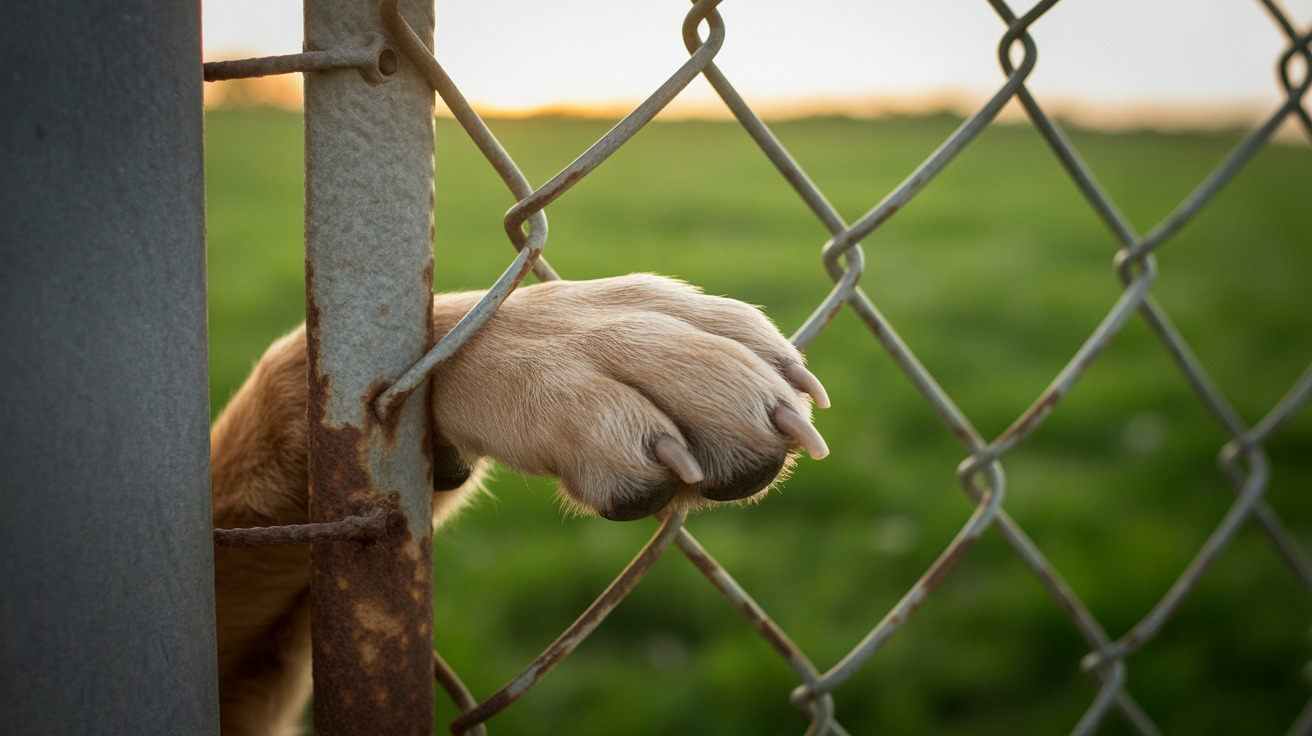10 Clear Signs Your Dog is Happy and Comfortable at Home: A Complete Guide to Canine Contentment
Every dog owner wants to ensure their furry companion feels truly happy and secure in their home. Unlike humans, dogs can't verbally express their emotions, but they communicate their feelings through a rich language of body signals and behaviors. Understanding these signs is crucial for building a strong, trusting relationship with your pet and ensuring their emotional well-being.
Dogs possess the emotional capacity of a 2- to 2.5-year-old child, meaning they experience genuine emotions like joy, fear, contentment, and anxiety. By learning to recognize the signs your dog is happy and comfortable at home, you can better meet their needs and create an environment where they truly thrive. This comprehensive guide will help you decode your dog's emotional state and strengthen the bond you share.
Understanding Happy Dog Body Language
A dog's body language serves as their primary communication tool, and recognizing positive signals is essential for any pet owner. Happy dogs display distinct physical characteristics that clearly indicate their comfort and contentment levels.
Facial Expressions and Eye Contact
One of the most reliable indicators of a happy dog is their facial expression. A content canine typically displays a soft, open mouth with corners slightly turned up, often resembling a human smile. This relaxed mouth posture, sometimes accompanied by a visible tongue, signals genuine contentment rather than stress-related panting.
The eyes are equally telling - happy dogs maintain a soft gaze with relaxed eyelids and frequent blinking. Their eyes appear bright and alert without tension. In contrast, narrowed eyes with a hard stare can indicate aggression, while wide eyes showing the whites may signal fear or anxiety.
Ear Position and Tail Behavior
Relaxed, floppy ears that rest naturally against your dog's head are a clear sign of happiness and comfort. Sometimes you might notice one ear cocked up while the other remains relaxed - this casual positioning indicates your dog feels secure enough to let their guard down while staying mildly alert to their surroundings.
Tail behavior is particularly revealing, though context matters significantly. A happy dog's tail is generally raised slightly and wags in a loose, rhythmic motion. The entire body often participates in this joyful expression, creating a wiggling motion that extends from the tail through the torso. However, remember that a tail wag isn't always positive - a sharp, tense wag with a very high tail position can indicate agitation rather than happiness.
Behavioral Signs of Canine Happiness
Playful Interactions and Social Behaviors
Happy dogs actively engage in play and social interactions. The classic "play bow" - where your dog lowers their chest to the ground while keeping their rear end elevated - is a clear invitation to play and indicates a joyful, confident state of mind. This behavior demonstrates that your dog feels safe enough in their environment to be vulnerable and playful.
You might also observe what's often called a "happy dance" - bouncing or hopping from side to side when excited. This energetic display typically occurs during greetings or when anticipating something enjoyable like walks or meals. These exuberant movements signal that your dog associates their home environment with positive experiences.
Sleep Patterns and Resting Positions
How and where your dog sleeps provides valuable insights into their emotional state. Happy, comfortable dogs often sleep in exposed positions that would leave them vulnerable in the wild. Sleeping on their side or back with their belly exposed demonstrates deep relaxation and complete trust in their environment and owner.
Adult dogs typically sleep up to 16 hours daily, and quality rest is crucial for their well-being. A dog that sleeps peacefully throughout the night and takes regular naps during the day is likely experiencing low stress levels. In contrast, restless sleep or a dog that remains curled in a tight "fox" position may indicate anxiety or discomfort.
Trust and Bonding Behaviors
Physical Affection and Proximity Seeking
One of the clearest signs your dog is happy and comfortable at home is their desire for physical closeness. Dogs that feel secure actively seek out their owner's company, whether by following them around the house, lying nearby during relaxation time, or leaning against them for comfort.
Happy dogs often initiate physical contact through gentle nudging, resting their head on your lap, or simply positioning themselves close enough to maintain physical contact. They typically enjoy petting and will lean into touch rather than pulling away. Some dogs show affection through "puppy kisses" - gentle licking that demonstrates trust and bonding.
Enthusiastic Greetings and Check-ins
The way your dog greets you reveals much about their emotional attachment and happiness levels. Happy, comfortable dogs typically offer enthusiastic but controlled greetings with soft eyes, loose tail wagging, and a wiggly body. They might bring you toys or simply position themselves nearby to acknowledge your presence.
During walks or outdoor activities, content dogs frequently check in with their owners - glancing back periodically to maintain connection. This behavior indicates they view you as their secure base and feel comfortable exploring while maintaining their bond with you.
Creating an Environment for Canine Happiness
Meeting Physical and Mental Needs
A truly happy dog requires more than just food and shelter. Mental stimulation plays a crucial role in canine contentment, and dogs that receive appropriate challenges through food puzzles, chew toys, and varied activities display more positive behaviors and fewer signs of stress or boredom.
Physical exercise should match your dog's age, breed, and individual capabilities. Regular walks, playtime, and opportunities to engage in natural behaviors like sniffing, exploring, and appropriate digging or chewing contribute significantly to emotional well-being. Happy dogs typically show enthusiasm for these activities rather than reluctance or disinterest.
Consistent Care and Communication
Dogs thrive on routine and clear communication from their owners. Consistent feeding schedules, regular exercise times, and predictable daily routines help create a sense of security. Happy dogs respond confidently to their owner's cues and show willing cooperation during training sessions.
The ability to switch from high-energy play to calm relaxation is another important indicator of emotional balance. Dogs that can engage enthusiastically in activities and then settle peacefully demonstrate healthy emotional regulation and trust in their environment.
Recognizing Signs of Unhappiness
Understanding signs of canine distress is equally important for maintaining your dog's well-being. Unhappy dogs may display excessive barking or growling, destructive behavior, changes in appetite, or withdrawal from social interaction. Physical indicators include ears pulled back against the head, stiff body posture, tail tucked under, and avoidance of eye contact.
Stress-related behaviors such as excessive paw licking, indoor elimination despite house training, pacing, or hiding require attention and potentially professional help. These behaviors often indicate that something in the dog's environment or routine needs adjustment to restore their sense of security and happiness.
Breed and Individual Considerations
Different dog breeds express happiness and stress in unique ways based on their genetic heritage and individual personalities. For example, German Shepherds may naturally appear more reserved while still being perfectly content, whereas Terriers typically display more overtly social behaviors. Understanding your specific dog's breed characteristics and personal tendencies helps you accurately interpret their emotional state.
Individual dogs also have varying social needs and activity levels that change as they age. Some dogs prefer quiet companionship, while others thrive on active play and social interaction. Observing your dog's preferences and adjusting your care approach accordingly contributes to their overall happiness and comfort.
When to Seek Professional Help
While most behavioral observations can guide your daily care decisions, certain situations warrant professional intervention. If your dog shows persistent signs of anxiety, aggression, or dramatic behavioral changes despite your efforts to create a positive environment, consulting with a veterinarian or certified animal behaviorist can provide valuable insights and solutions.
Sudden changes in appetite, sleep patterns, or activity levels may indicate underlying health issues that require veterinary attention. Remember that physical discomfort often manifests as behavioral changes, so maintaining regular veterinary care supports both physical and emotional well-being.
Conclusion
Recognizing the signs your dog is happy and comfortable at home strengthens your bond and ensures their emotional well-being. Happy dogs display relaxed body language, seek social interaction, maintain healthy routines, and show trust through their behavior and sleeping positions. By understanding these signals and creating an environment that meets their physical, mental, and emotional needs, you can foster a truly fulfilling relationship with your canine companion.
Remember that each dog is unique, and learning your pet's individual communication style takes time and observation. The investment in understanding your dog's emotional needs pays dividends in the form of a deeper, more satisfying relationship and a genuinely happy, well-adjusted pet who truly feels at home with you.
Frequently Asked Questions
- Q: How can I tell if my dog's tail wagging actually means they're happy?
Context is crucial when interpreting tail wags. A happy dog's tail wag is typically loose and rhythmic, often accompanied by a relaxed body posture and soft facial expression. In contrast, a stiff, high tail with sharp, tense wagging movements may indicate agitation or arousal rather than happiness.
- Q: Is it normal for my happy dog to sleep so much during the day?
Yes, adult dogs naturally sleep up to 16 hours daily. Quality sleep is actually a sign of contentment and security. A dog that sleeps peacefully and wakes up refreshed is likely experiencing low stress levels and feeling comfortable in their environment.
- Q: Why does my dog follow me around the house constantly?
Following behavior typically indicates attachment and happiness. Dogs that feel secure and bonded with their owners often seek proximity as a way of maintaining connection. This behavior usually reflects contentment rather than anxiety, especially when accompanied by relaxed body language.
- Q: Should I be concerned if my dog doesn't show obvious signs of excitement?
Not necessarily. Different breeds and individual dogs express happiness in varying ways. Some dogs show contentment through calm, peaceful behavior rather than obvious excitement. Look for overall indicators like good appetite, healthy sleep, and relaxed body language rather than expecting dramatic displays of joy.
- Q: How can I help a rescue dog feel more comfortable and happy in my home?
Building trust with anxious dogs requires patience and consistency. Provide a predictable routine, avoid forcing interactions, allow them to approach you on their terms, and create safe spaces where they can retreat when needed. Focus on meeting their basic needs while gradually building positive associations with your presence.
- Q: What's the difference between a happy bark and other types of barking?
Happy barks are typically higher pitched and shorter in duration, often occurring during play or greetings. They sound lighter and more musical compared to alarm barks, which are usually deeper and more repetitive, or stress-related barking, which may be continuous and frantic.
- Q: Can dogs be happy even if they don't play much?
Yes, some dogs express happiness through calm contentment rather than active play. Senior dogs, certain breeds, and individual personalities may show happiness through peaceful companionship, good appetite, relaxed sleep, and gentle social interaction rather than energetic play behaviors.






